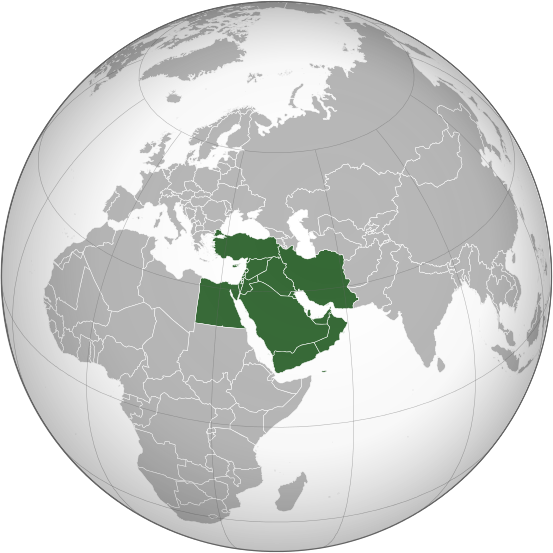Middle East Lubes Still Promising
Worries about the Middle East finished lubricants market have dominated recent news headlines, but according to one industry veteran, the outlook for the sector holds promise in the medium term.
Steady economic growth in the six-member Gulf Cooperation Council and changing market dynamics will support lubricant consumption, independent consultant Bhupinder Singh told the AMEA Base Oil, Lubricant and Wax Conference in Mumbai last month. The GCC bloc – which includes Bahrain, Kuwait, Oman, Qatar, Saudi Arabia and the United Arab Emirates – will see a 2.7 percent rise in gross domestic product next year, underpinned by higher fixed investment. The GDP of Saudi Arabia, the Gulf’s largest lubricant market, is forecast to grow 2.1 percent in 2019, Singh claims.
Iran’s economy is expected to grow 4.1 percent next year, despite being confronted with renewed sanctions. Egypt, where the economy has performed well recently, is forecast to grow its GDP by 5.5 percent in the 2018-2019 fiscal year. Passenger car sales volumes in Iran were close to 1.6 million units last year, while commercial vehicle sales exceeded 120,000 units. But the potentially lucrative market looks all but off-limits to many lubricant marketers because Washington’s threat to penalize companies that do business with Iran casts a long shadow. An uncertain geopolitical backdrop as well as potentially volatile oil prices and a slower-than-expected pace of reforms are major downside risks that could disrupt the regional lubricants business.
Singh estimates Middle East lubricant demand at 1.2 million metric tons. With a 49 percent, share of the market, Iran is the largest consumer of engine oils, followed by Saudi Arabia at 19 percent. Singh, whose previous experience includes stints at Bapco and Castrol, said heavy-duty engine oils account for 45 percent of automotive lubricant demand, while passenger car motor oils account for 36 percent and automatic transmission fluid oils and gear oils at 7 percent and 6 percent, respectively.
Unsurprisingly in such a diverse region, grades of engine oils vary, but consumption of 20W-40 and 20W-50 remains high, particularly in Iran and Kuwait, where it exceeds 70 percent of total PCMO demand. Gauging future demand in such an unpredictable environment is not easy, but by 2027 Singh forecasts lubricant demand to exceed 1.7 million tons, with a compound annual growth rate of 1.4 percent between 2017 and 2022 and 1.1 percent in the 2022-2027 period.
When it comes to base oils, analysts say the outlook for the Middle East market is clouded by uncertainty over Iran’s ability to maintain exports of API Group I base stocks and the possibility of interruption to Group II and III shipments from the Gulf. Singh said it is clear that blenders in the region are shifting from Group I to Group III base oils because the technical and commercial benefits of Group III base oils are better understood.
The Middle East is caught in the crosshairs of the changes sweeping through the global automotive industry. That is good news for lubricant marketers in a region where evolution to higher specification engine oils has lagged major automotive markets such as the U.S. and Europe. According to Singh, emission controls and the increasing use of catalysts, filters, bio-fuels and the rapid rise of hybrid and electric vehicles have altered the strategy of Original Equipment Manufacturers towards lubricant specifications.
The Middle East automotive market’s relative size and the shift by OEMs to forge alliances for new engine technologies will force a closer alignment to global specifications. Singh said the increased use of turbochargers and the downsizing of gasoline engines has upended markets, but tough operating conditions in the Middle East still require specific solutions. Factors such as frequent acceleration and deceleration, long idle times and extremely high ambient temperatures place enormous strains on engine oil performance. Dust is also a particular challenge in the Middle East, where particulate concentrations can be as much as 10 times greater than those found on urban and rural southwestern U.S. air monitoring sites.
Yet even with the Middle East’s unique operating environment, the lubricant market is fiercely competitive, with new brands and blending plants sprouting up on a regular basis. According to Singh, the challenge for existing players is to find ways to remain relevant. He advocates creative branding, strategic market expansion, flexibility, networking and ”clever” costing as enablers for customization and adaptation strategies, pointing to synthetic and biodegradable lubricants as recent innovations. And when it comes to competition in the region’s two largest markets – Saudi Arabia and U.A.E. – they are good example of Singh’s assertion that lubricant marketers must uncover new routes to maintain customer loyalty. In Saudi Arabia Petromin commands a 24 percent share, followed by Shell and Fuchs at 16 percent each, Mobil at 11 percent, Castrol with 10 percent and Total at 7 percent, Singh estimates. Others accounted for the remaining 16 percent.
Source:https://pubs.lubesngreases.com/lubereport-emea/1
_36/trends/Middle-East-Lubes-Promising-Despite-Concerns-
13891-1.html?ET=lubesngreases:e1061:31165a:&st=email

